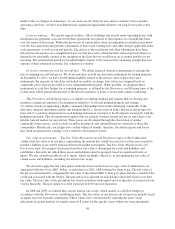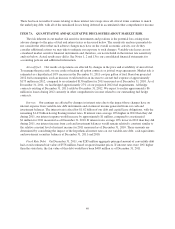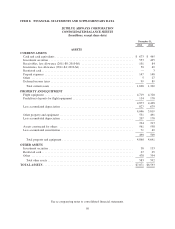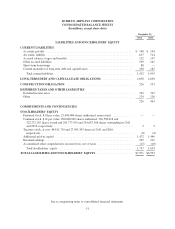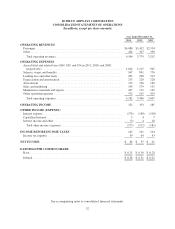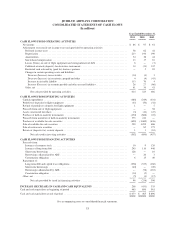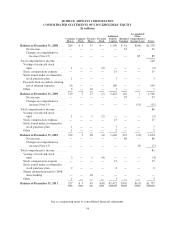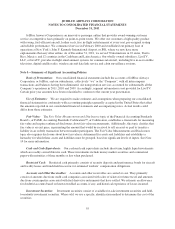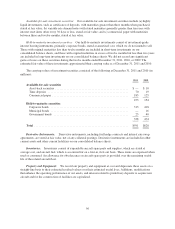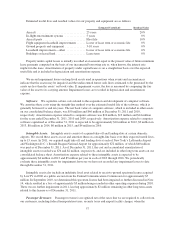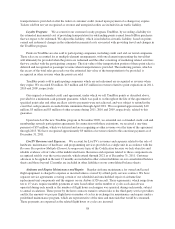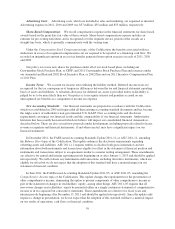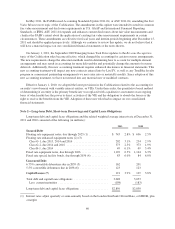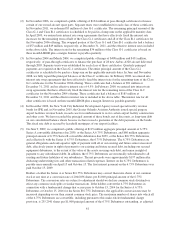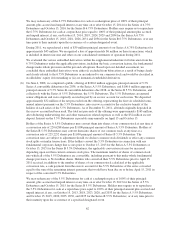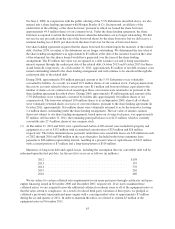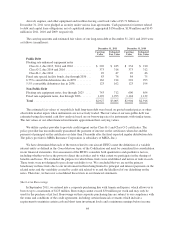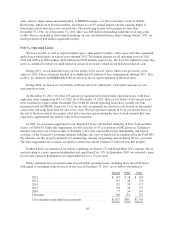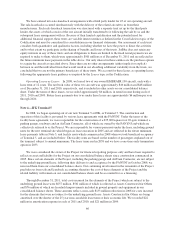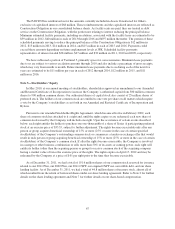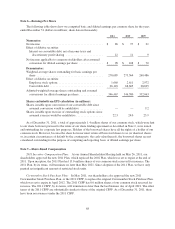JetBlue Airlines 2011 Annual Report Download - page 68
Download and view the complete annual report
Please find page 68 of the 2011 JetBlue Airlines annual report below. You can navigate through the pages in the report by either clicking on the pages listed below, or by using the keyword search tool below to find specific information within the annual report.transportation is provided or after the ticket or customer credit (issued upon payment of a change fee) expires.
Tickets sold but not yet recognized as revenue and unexpired credits are included in air traffic liability.
Loyalty Program: We account for our customer loyalty program, TrueBlue, by recording a liability for
the estimated incremental cost of providing transportation for outstanding points earned from JetBlue purchases
that we expect to be redeemed. We adjust this liability, which is included in air traffic liability, based on points
earned and redeemed, changes in the estimated incremental costs associated with providing travel and changes in
the TrueBlue program.
Points in TrueBlue are also sold to participating companies, including credit card and car rental companies.
These sales are accounted for as multiple-element arrangements, with one element representing the travel that
will ultimately be provided when the points are redeemed and the other consisting of marketing related activities
that we conduct with the participating company. The fair value of the transportation portion of these point sales is
deferred and recognized as passenger revenue when transportation is provided. The marketing portion, which is
the excess of the total sales proceeds over the estimated fair value of the transportation to be provided, is
recognized in other revenue when the points are sold.
TrueBlue points sold to participating companies which are not redeemed are recognized as revenue when
they expire. We recorded $3 million, $13 million and $15 million in revenue related to point expirations in 2011,
2010 and 2009, respectively.
Our original co-branded credit card agreement, under which we sell TrueBlue points as described above,
provided for a minimum cash payment guarantee, which was paid to us throughout the life of the agreement if
specified point sales and other ancillary activity payments were not achieved, and was subject to refund in the
event that cash payments exceeded future minimums through April 2011. We recognized approximately $10
million, $5 million and $5 million of other revenue during 2011, 2010 and 2009, respectively, related to this
guarantee.
Upon launch of the new TrueBlue program in November 2009, we extended our co-branded credit card and
membership rewards participation agreements. In connection with these extensions, we received a one-time
payment of $37 million, which we deferred and are recognizing as other revenue over the term of the agreement
through 2015. We have recognized approximately $9 million of revenue related to this one-time payment as of
December 31, 2011.
LiveTV Revenues and Expenses: We account for LiveTV’s revenues and expenses related to the sale of
hardware, maintenance of hardware, and programming services provided as a single unit in accordance with the
Revenue Recognition-Multiple-Element Arrangements topic of the Codification because we lack objective and
reliable evidence of fair value of the undelivered items. Revenues and expenses related to these components are
recognized ratably over the service periods, which extend through 2021 as of December 31, 2011. Customer
advances to be applied in the next 12 months are included in other current liabilities on our consolidated balance
sheets and those beyond 12 months are included in other liabilities on our consolidated balance sheets.
Airframe and Engine Maintenance and Repair: Regular airframe maintenance for owned and leased
flight equipment is charged to expense as incurred unless covered by a third-party services contract. We have
separate service agreements covering certain of our scheduled and unscheduled repair of airframe line
replacement unit components and the engines on our Airbus A320 aircraft. These agreements, which range from
ten to 15 years, require monthly payments at rates based either on the number of cycles each aircraft was
operated during each month or the number of flight hours each engine was operated during each month, subject
to annual escalations. These power by the hour contracts transfer certain risks to the third-party service providers
and fix the amounts we pay per flight hour or number of cycles in exchange for maintenance and repairs under a
predefined maintenance program, which are representative of the time and materials that would be consumed.
These payments are expensed as the related flight hours or cycles are incurred.
58


